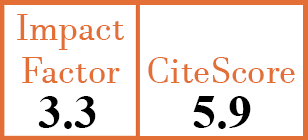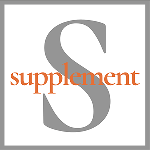Full Papers
Impact of anti-rheumatic treatment on the individual components of the ACR composite score in patients with rheumatoid arthritis: real-world data
M. Movahedi1, D. Choquette2, L. Coupal3, E. Keystone4, C. Bombardier5, L. Bessette6
- UHN, Toronto General Hospital Research Institute, Toronto, and Institute of Health Policy, Management, and Evaluation (IHPME), University of Toronto, Toronto, ON, Canada.
- Institut de Rhumatologie de Montréal, RHUMADATA, Montréal, Canada.
- Institut de Rhumatologie de Montréal, RHUMADATA, Montréal, Canada.
- University of Toronto, Medicine, Toronto, Canada.
- UHN, Toronto General Hospital Research Institute, Toronto; Institute of Health Policy, Management, and Evaluation (IHPME), University of Toronto, and University of Toronto, Medicine, Toronto, Canada.
- Laval University, Rheumatology, Quebec City, Canada. louis.bessette@crchudequebec.ulaval.ca
CER17354
2024 Vol.42, N°9
PI 1820, PF 1829
Full Papers
Free to view
(click on article PDF icon to read the article)
PMID: 38855967 [PubMed]
Received: 05/12/2023
Accepted : 17/04/2024
In Press: 06/06/2024
Published: 23/09/2024
Abstract
OBJECTIVES:
Standard criteria for measuring treatment efficacy in patients with rheumatoid arthritis (RA) include American College of Rheumatology (ACR) response rates, which require meeting a threshold of ≥20/50/70% improvement in several physician- and patient-reported measures. We aimed to evaluate the impact of csDMARDs, TNF inhibitors (TNFi), and tofacitinib (TOFA) on ACR components in real-life practice.
METHODS:
Clinical data of RA patients with a CDAI >10 at the time they started a treatment were pooled from two registries: Ontario Best Practices Research Initiative (OBRI) and RHUMADATA. Endpoints included proportions of patients achieving: ACR20/50/70 responses, ≥20/50/70% improvements and mean percentage improvement in individual ACR components at Month 6. We also adjusted for potential confounders to compare impact of these medications on outcomes of interest.
RESULTS:
A total of 669 patients were included (csDMARD, n=157, TNFi, n=252; TOFA, n=260). An overall higher proportion in all three-medication groups achieved ≥20/50/70% improvement in primary ACR components vs. secondary components. Among secondary components, ≥20/50/70% improvement rates were numerically highest for PhGA and lowest for HAQ-DI and pain. Among ACR20/50/70 responders for all medications, the mean percentage improvement was more than 80% for primary components, and ranged from 30% to 80% for secondary components. A significantly lower proportion of patients in TNFi group achieved to at least 50% improvement in pain compared to TOFA after adjusting.
CONCLUSIONS:
In this real-world practice, physician-reported measures contribute slightly more to overall ACR20/50/70 responses. Pain was the most important factor in achieving an ACR50 TOFA users, possibly reflecting the different effects of JAKi on pain.



